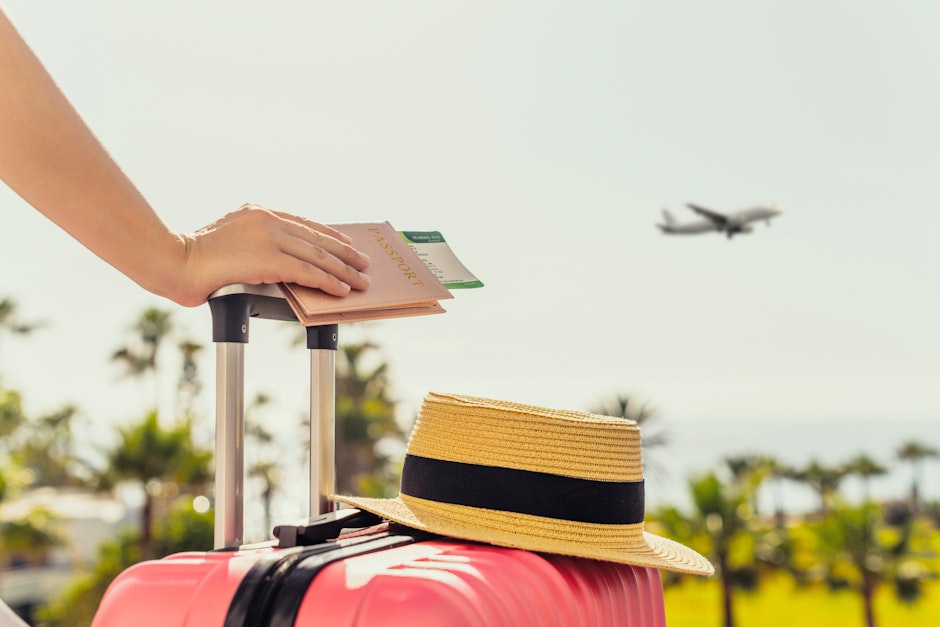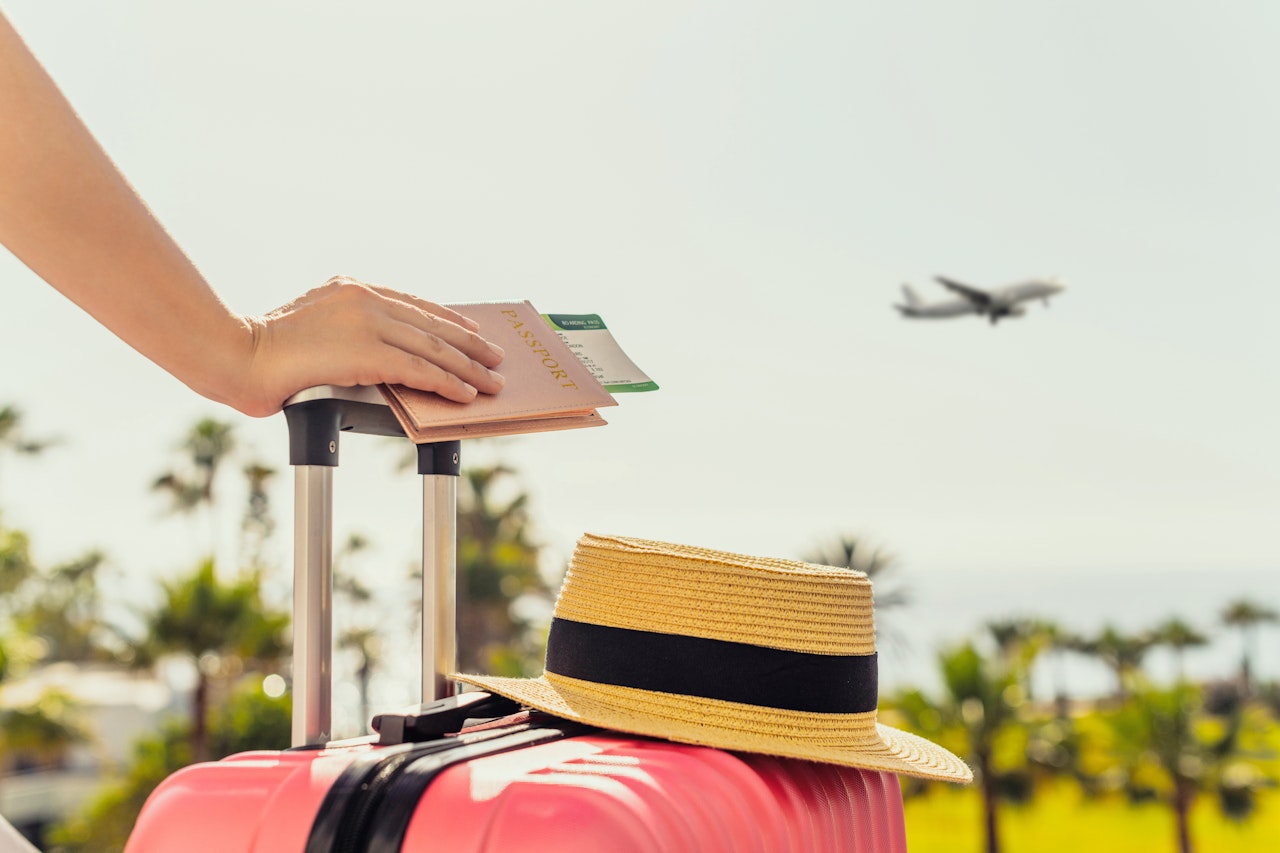Here are some tips for using out of home (OOH) advertising to reach and engage with summer travelers when and where it matters most.

Spring has sprung in many parts of the world, bringing spectacular super blooms and warmer temperatures that travelers can’t wait to take advantage of.
Unsurprisingly, spring break travel shattered records in March and April, with AAA travel data revealing a 28% increase in cruise bookings, a 20% uptick in international flight bookings, and a 37% hike in hotel bookings in the US during these months. If it’s any indication of what’s to come this summer, investing ad spend ahead of and during peak travel season is a smart strategy for many brands.
Travel and tourism, health and wellness, liquor, CPG, and even clothing brands can all benefit from targeting travelers with ads during this time frame, especially as more Millennials and Gen Zers plan to open their wallets for travel this year, according to a Hilton study.
While an omnichannel approach can certainly help maximize ad spend, incorporating out of home (OOH) and digital OOH (DOOH) is a must. They not only provide unique formats that can capture the attention of audiences unlike any other channel, and even inspire the idea for travel, but also allows you to make use of demographic targeting and real-time contextual data to adapt campaign creative and messaging to reach audiences on the move with timely, relevant ads.
Getting started with a DOOH campaign to target summer travelers may seem complicated, but it doesn’t have to be with modern OOH advancements. Here are a few things to be mindful of when tapping into OOH advertising for peak travel seasons like summer.
1. Think beyond airport signage
What’s not to love about a high-dwell time environment like an airport, where audiences are likely in a purchasing mindset? Airports are filled with eye-catching displays strategically positioned along the traveler’s sightline from ticketing to security, between gates, and from baggage claim to parking.
They’re also a home to many quick service restaurants (QSRs) and shops, where travelers can pop in for a quick bite between connections or to grab a travel necessity they may have left behind. These are just a few reasons airport advertising ranks high for perceived brand value compared to alternative ad channels.
It’s important, however, to also consider audiences outside the airport, including those who may be earlier in their travel journey or have yet to even think of their next trip.
In addition to aiport advertisements, a brand might also activate OOH ads in subway and train stations, on roadside billboards, and in bus shelters during commute times that inspire audiences to think about vacationing or provide options for places to visit.
Alternatively, or in tandem, a brand looking to target travelers could deploy OOH ads on and around college campuses to reach summer break-bound students where they live, study, work, and play. Gas stations, EV chargers, and supermarkets also present opportunities to reach audiences who have planned or are planning travel or may be interested in booking a trip.
Furthermore, roadside advertising poses distinct advantages for targeting travelers already on their trips, especially as a survey from Nationwide Travel Insurance reports that 91% of Americans plan to travel domestically this year, with 60% saying they will likely travel by car. And, the OAAA estimates that 71% of travelers often look at roadside billboard messaging.
OOH is also incredibly useful for local attractions like amusement parks and museums as well as restaurants and gas stations looking to draw traffic to their locations; they might also use roadside billboards to showcase special events or promotions.
2. Use OOH to drive action across channels
OOH ads can target audiences from the top down to the bottom of the marketing funnel and have been shown to inspire 78% of audiences to take action. In the case of travelers or would-be travelers, an OOH ad could be used to inspire them to visit a hotel or airline website or social media account, get in touch with a travel agent, search for swimsuits for an upcoming trip, or even make travel reservations through a third-party platform.
A hotel, for instance, might activate OOH ads with compelling visuals and clear calls to action (CTAs) in key tourist spots, around schools, and near business districts with messaging that promotes discounted rates, can’t-miss amenities, and more. Doing so could help drive traffic to the hotel’s website, social channel, or mobile app, or encourage travelers to look up the hotel on their preferred travel booking platform.
Mobile retargeting is another great way to maximize OOH ad spend. It’s easier than ever to use modern ad tech to target individuals exposed to OOH ad ads by geofencing relevant locations. This way, you can reconnect with these audiences on mobile devices or other online platforms in a way that feels more organic later in their purchase journey.
3. Make an impact with contextual via programmatic digital out-of-home (pDOOH)
The contexts that pDOOH lets advertisers take advantage of to reach audiences at the ideal moment grow by the day – from weather conditions to sports scores, traffic, breaking news, and more. A rapidly expanding market set to reach $59bn by 2031, pDOOH provides an avenue through which advertisers can drive brand awareness and purchasing decisions.
For example, a tourism board might employ weather-based triggers to promote indoor attractions like museums, art galleries, or shopping centers to tourists during a rainy or exceptionally hot day. Conversely, they might highlight outdoor activities such as hiking trails, beach outings, or boat tours when the weather is nice.
While festivals or special events are running in a travel destination, a hotel chain could also trigger ads that promote accommodation packages or exclusive offers for event attendees. Likewise, a travel app might feature local events, concerts, or festivals prominently on the screen to encourage travelers to explore the destination’s cultural scene.
Airlines could also opt to customize promotions using financial data triggers based on currency exchange rates to attract visitors from countries where their currency will go further. There are so many different opportunities to explore.
4. Plan ahead but remain flexible to capitalize on seasonal opportunities
Summer travel season kicks off in two months, but there’s no time like the present to start reaching travelers. Integrating OOH formats like digital billboards and transit advertising into your larger omnichannel strategy will ultimately pay off, as it lets you engage with audiences in high-traffic areas, capitalize on seasonal travel trends, and create brand experiences that travelers can get on board with.
If you’re looking for the best place to start, it’s worth exploring travel and tourism auction packages available via your DSP, like the one we offer here. And, if you feel you’ve missed the summer travel season boat, remember it’s really never too early or late. With programmatic DOOH, you can easily execute OOH campaigns on the fly this summer, and if it’s not in the budget now through summer, there’s always the holiday travel season, which will be here before we know it.










